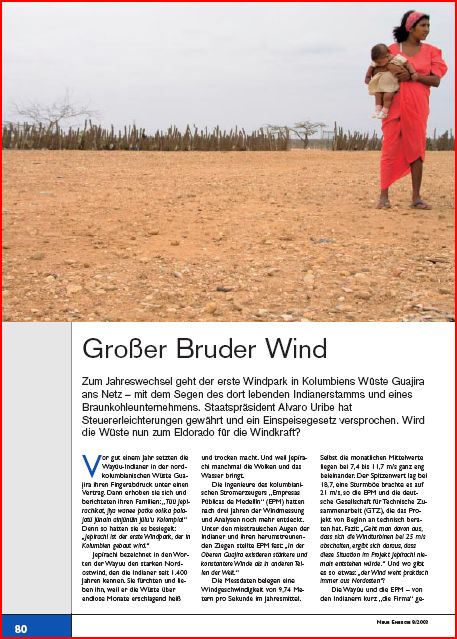Knowledge fuels change - Support energypedia!
For over 10 years, energypedia has been connecting energy experts around the world — helping them share knowledge, learn from each other, and accelerate the global energy transition.
Today, we ask for your support to keep this platform free and accessible to all.
Even a small contribution makes a big difference! If just 10–20% of our 60,000+ monthly visitors donated the equivalent of a cup of coffee — €5 — Energypedia would be fully funded for a whole year.
Is the knowledge you’ve gained through Energypedia this year worth €5 or more?
Your donation keeps the platform running, helps us create new knowledge products, and contributes directly to achieving SDG 7.
Thank you for your support, your donation, big or small, truly matters!
Difference between revisions of "Social Assessment - Wind Energy"
***** (***** | *****) |
***** (***** | *****) |
||
| Line 12: | Line 12: | ||
To circumvent or mitigate any negative effects, it is advisable to conduct ex-ante social (impact) assessments as well as to make the social and cultural aspects a continous observation area in [[M&E - Wind Energy|monitoring]]. | To circumvent or mitigate any negative effects, it is advisable to conduct ex-ante social (impact) assessments as well as to make the social and cultural aspects a continous observation area in [[M&E - Wind Energy|monitoring]]. | ||
| − | === Identification of target group / | + | === Identification of target group / stakeholder analysis<br> === |
| − | <br> | + | An important aspect of social assessments is the identification of the target group resp. the persons that are directly and indirectly concerned by the wind energy measure. <br> |
=== Cultural, socio-economic aspects === | === Cultural, socio-economic aspects === | ||
Revision as of 12:46, 25 July 2011
Aspects of social assessments
Conducting social assessments has the purpose to evaluate and observe potential impacts of wind energy projects. Besides producing energy and providing for positive economic, social and environmental developments, in particular the windmills can cause un-wanted effects too. Possibly these are related to
- noise pollution
- visual disturbances
- well-being and comfort
- socio-economic valuation of land/property.
Mentioned negative impacts bear subjective connotations. For instance, the noise pollution might not all be assessed disturbing from a technical point of view; i.e. below noise emission values. However, inhabitants may consider it noisy nevertheless from their subjective point of view.
To circumvent or mitigate any negative effects, it is advisable to conduct ex-ante social (impact) assessments as well as to make the social and cultural aspects a continous observation area in monitoring.
Identification of target group / stakeholder analysis
An important aspect of social assessments is the identification of the target group resp. the persons that are directly and indirectly concerned by the wind energy measure.
Cultural, socio-economic aspects
Social aspects of windparks - example Colombia
http://www.gtz.de/de/dokumente/de-windenergie-kolumbien-bruder-wind-2003.pdf
Tourism impacts
Methods and Instruments
A variety of methods and instruments to conduct social assessments have been developed by development organizations, including GIZ. Approaches are for instance:
- Poverty and Social Impact analysis (PSIA)
- Poverty Impact Assessment (PIA)
- Social Impact Assessment
The first mentioned approaches clearly put emphasis on assessing impacts that specifically concern poor people. PSIA are implemented in the framework of so called PRSP Poverty Reduction Strategy Papers[1].
"Social Impact Assessment also looks at the institutional or societal context of a reform or measure and weighs up its political feasibility, tying in sound analysis and dialogue at all stages. The analysis delivers the facts needed to evaluate reform proposals and outlines potential options; actors from politics, sector institutions and civil society engage in dialogue to negotiate a feasible compromise. This places reforms on a wider basis, giving them a better chance of success." [2]
For Wind Energy projects "social impact assessments" facilitate the dialogue with social actors; this approach assists to make potential risks and conflicts transparent in order to implement possibly required mitigation measures.
- ↑ cp. e.g. http://www.gtz.de/en/themen/uebergreifende-themen/armut/7166.htm, access 07-2011
- ↑ GIZ 2011: Methods and Instruments.fckLRSocial Impact Assessment. http://www.gtz.de/de/dokumente/giz2011-en-social-impact-assessment.pdf, p. 1




















